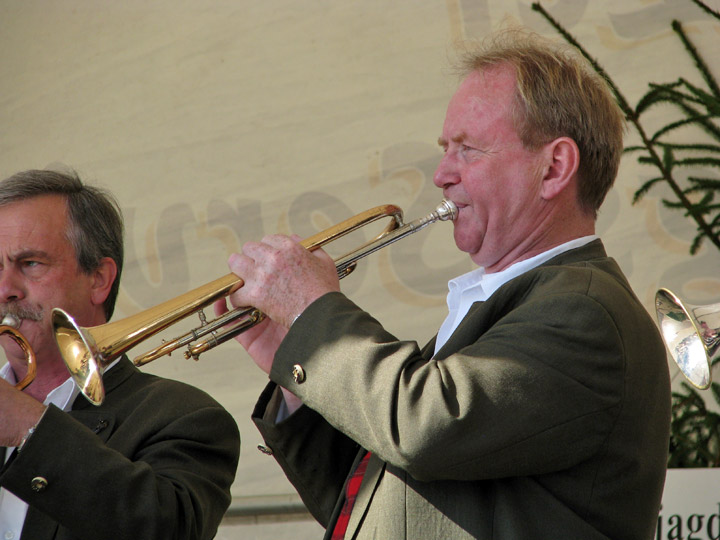

Mecklenburg
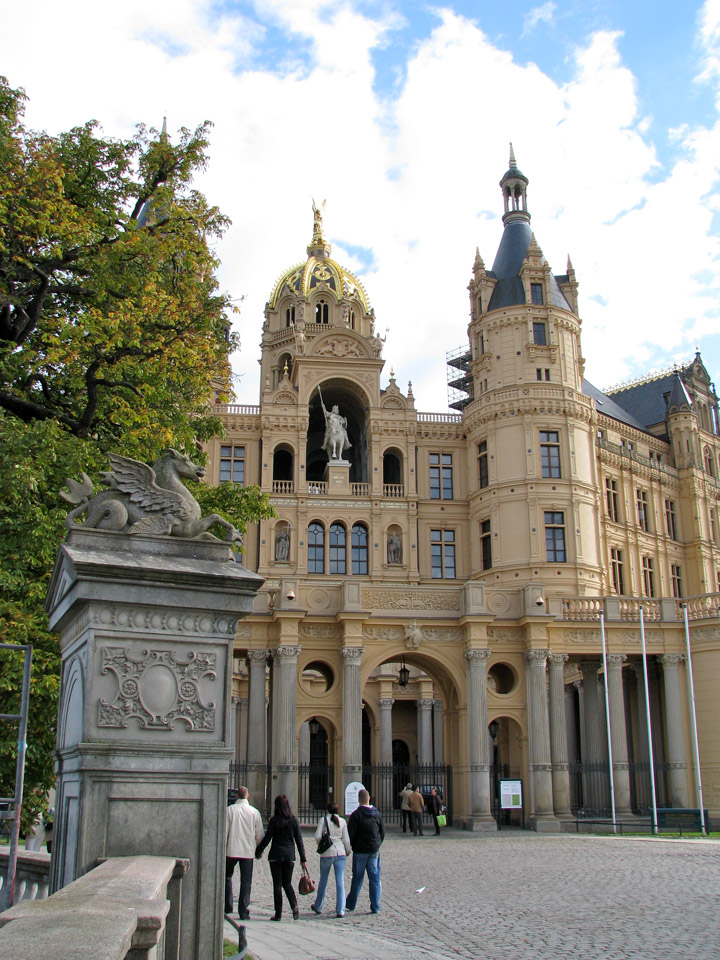
Schwerin Castle
More Photos of Schwerin Castle
Mecklenburg (Low German: Mekelnborg) is a region in northern Germany comprising the western and larger part of the federal state Mecklenburg-Vorpommern. The largest cities of the region are Rostock, Schwerin, and Neubrandenburg.
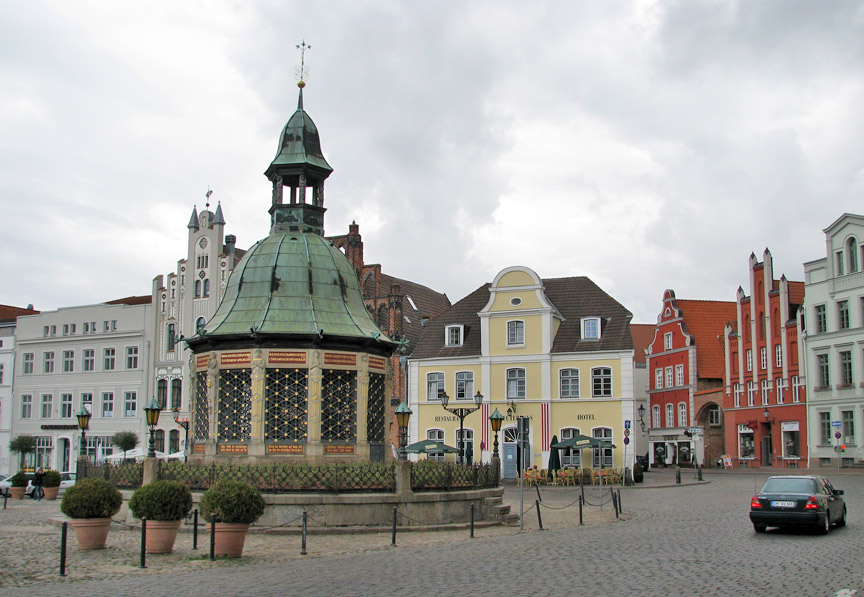
market place in Wismar
The name Mecklenburg derives from a castle named "Mikilenburg" (Old German: "big castle"), located between the cities of Schwerin and Wismar. It was the ancestral seat of the House of Mecklenburg and for a time divided into Mecklenburg-Schwerin and Mecklenburg-Strelitz among the same dynasty.
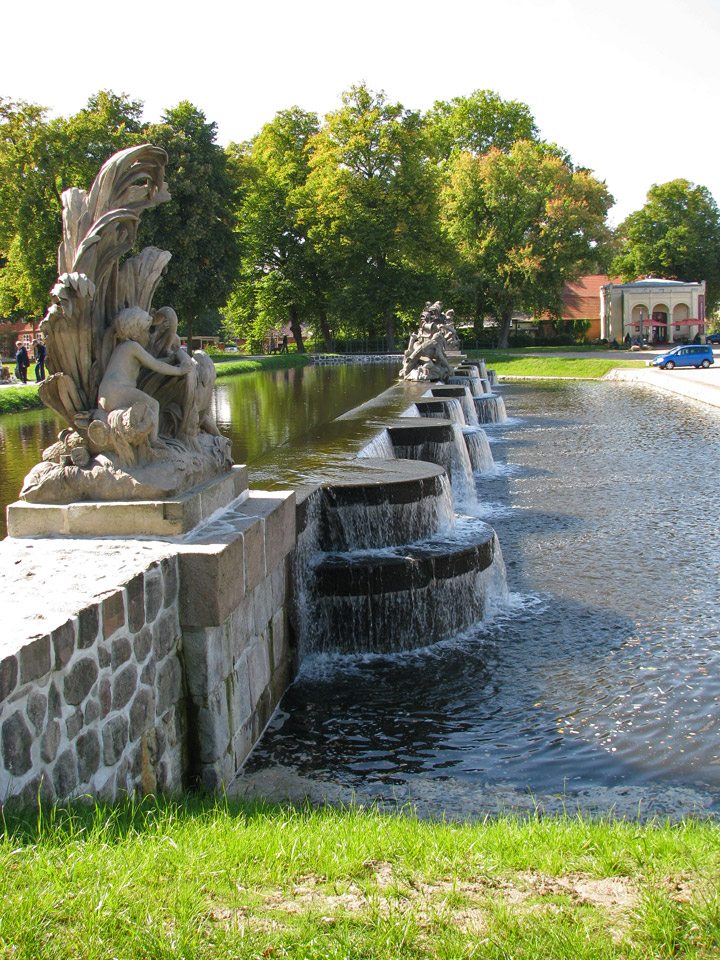
canal feature in Ludwigslust
Linguistically Mecklenburgers retain many features of the plattdeutsch, or Low German dialect or language.

Hunting and fishing festival in front of Ludwigslust Schloss
Mecklenburg is known for its mostly flat countryside. Much of the terrain forms a morass, with ponds, marshes and fields as common features, with small forests interspersed. The terrain changes as one moves north towards the Baltic Sea.
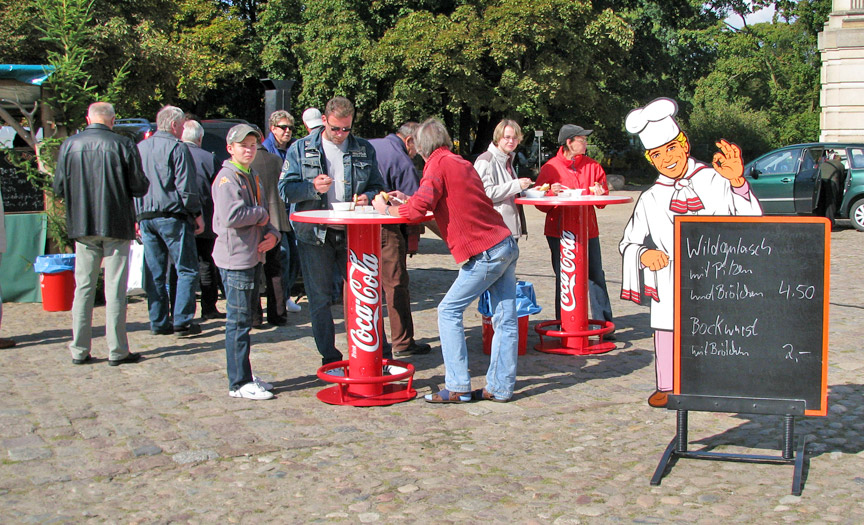
game Goulash being served
Under the peat of Mecklenburg are sometimes found deposits of ancient lava flows. Traditionally, at least in the countryside, the stone from these flows is cut and used in the construction of homes, often in joint use with cement, brick and wood, forming a unique look to the exterior of country houses.
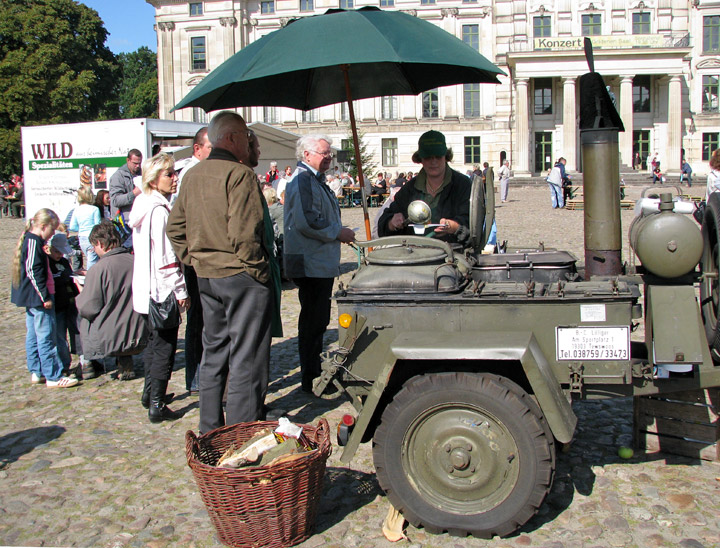
dished from the big cooker
Mecklenburg has productive farming, but the land is most suitable for grazing purposes. Nonetheless Mecklenburg is a relatively poor region of Germany with a rate of unemployment from 13–20%; traditionally Mecklenburg has been one of the poorer German areas. The area has seen an increase in tourism, particularly with regard to the beaches at the Baltic Sea, Isle of Rügen, the Mecklenburg Lakeland (Mecklenburgische Seenplatte), the Mecklenburg Switzerland (Mecklenburgische Schweiz) with its pristine nature, and the old Hanseatic towns well known for the famous Brick Gothic churches.
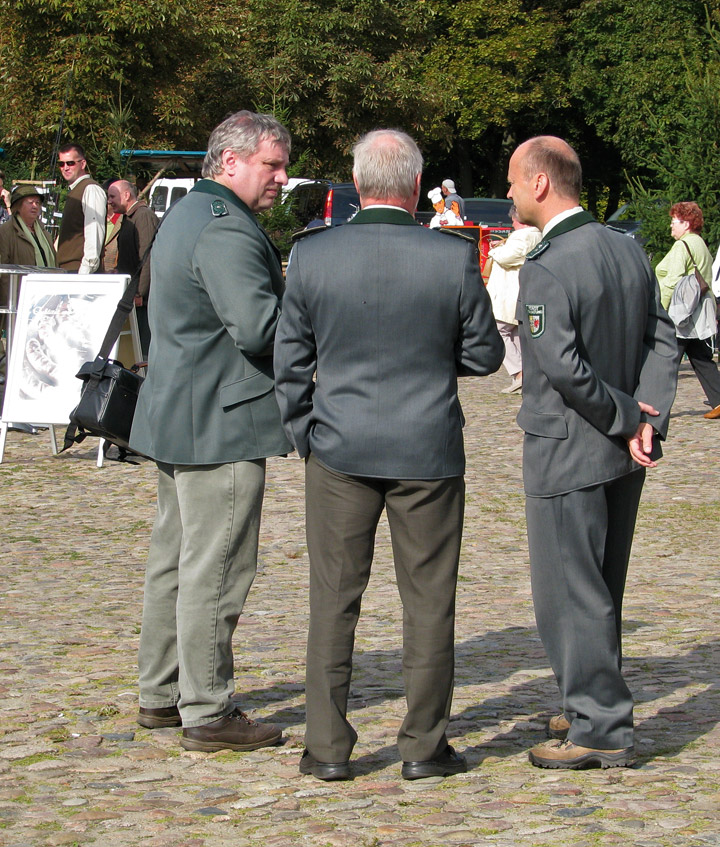
game and forest officials
Mecklenburg is the site of many prehistoric dolmen tombs. Its earliest organized inhabitants may have had Celtic origins. By no later than 100 BC the area had been populated by pre-Christian Germanic peoples.
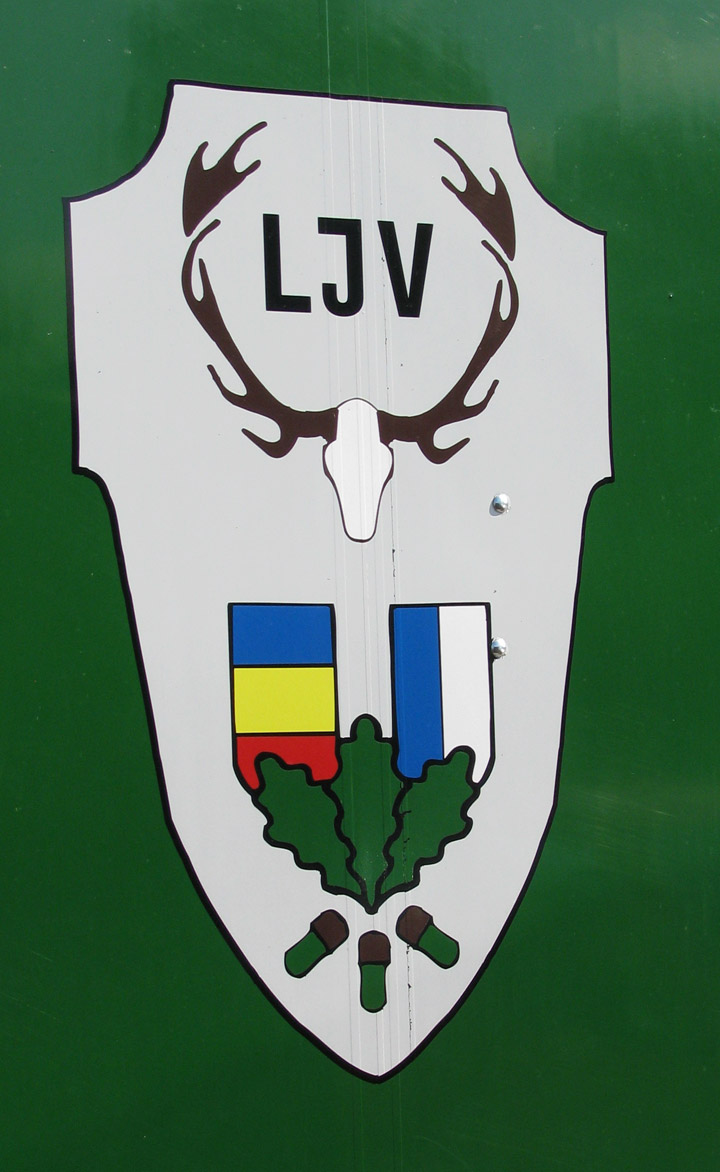
The traditional symbol of Mecklenburg, the grinning steer's head (stierkopf in
German), with an attached hide, and a crown above, may have originated from this
period. It represents what early peoples would have worn, i.e. a steers's head
as a hat, with the hide hanging down the back to protect the neck from the sun,
and overall as a way to instill fear in the enemy.
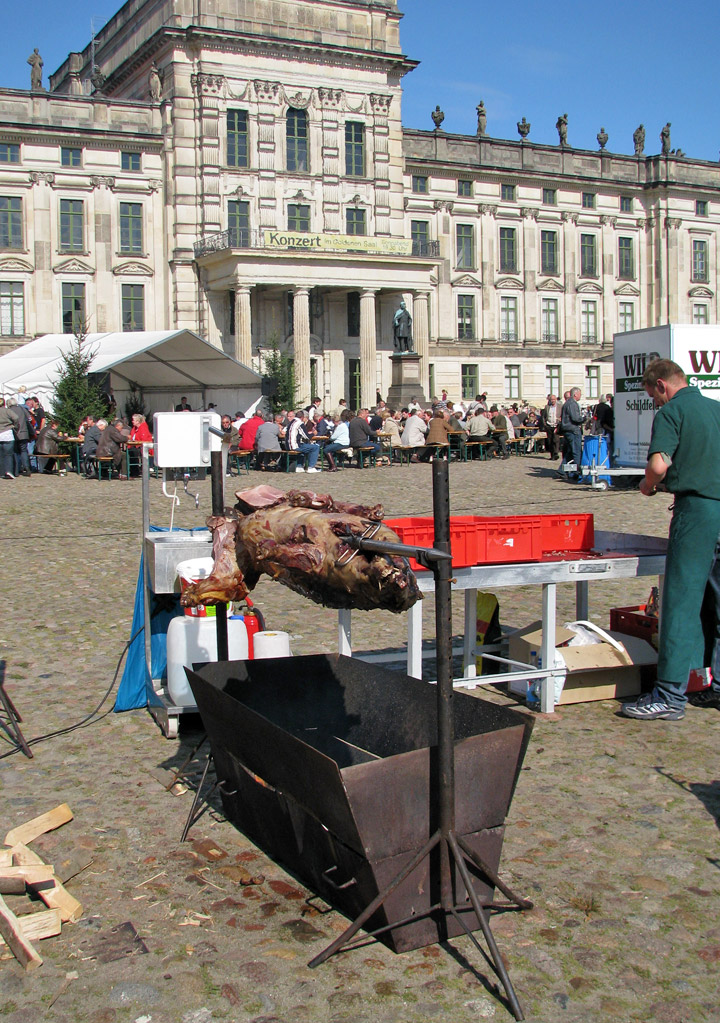
or dine from a roasted pig in front of Ludwigslust Schloss
From the 7th through the 12th centuries, the area of Mecklenburg was taken over by Western Slavic peoples, most notably the Obotrites and other tribes that Frankish sources referred to as "Wends". The 11th century founder of the Mecklenburgian dynasty of Dukes and later Grand Dukes, which lasted until 1918, was Nyklot of the Obotrites.
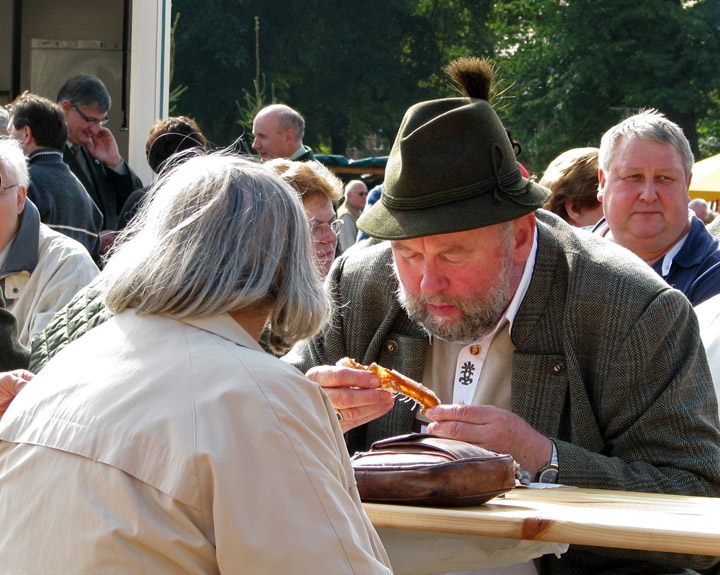
In the late 12th century, Henry the Lion, Duke of the Saxons, conquered the
region, subjugated its local lords, and Christianized its people, in a precursor
to the Northern Crusades. From 12th to 14th century, large numbers of Germans
and Flemings settled the area (Ostsiedlung), importing German law and improved
agricultural techniques. The Wends who survived all warfare and devastation of
the centuries before, including invasions of and expeditions into Saxony,
Denmark and Liutizic areas as well as internal conflicts, were assimilated the
centuries thereafter. However, elements of certain names and words used in
Mecklenburg speak to the lingering Slavic influence. An example would be the
city of Schwerin, which was originally called Zuarin in the Slavic. Another
example is town of Bresegard, the 'gard' portion of the town name derives from
the Slavic word 'grad' , meaning city or town.

listen to the small village hunting horn ensemble
Since the 12th century, the territory has remained stable and relatively independent of its neighbors; one of the few German territories for which this is true. During the reformation the Duke in Schwerin would convert to Protestantism and so would follow the Duchy of Mecklenburg.
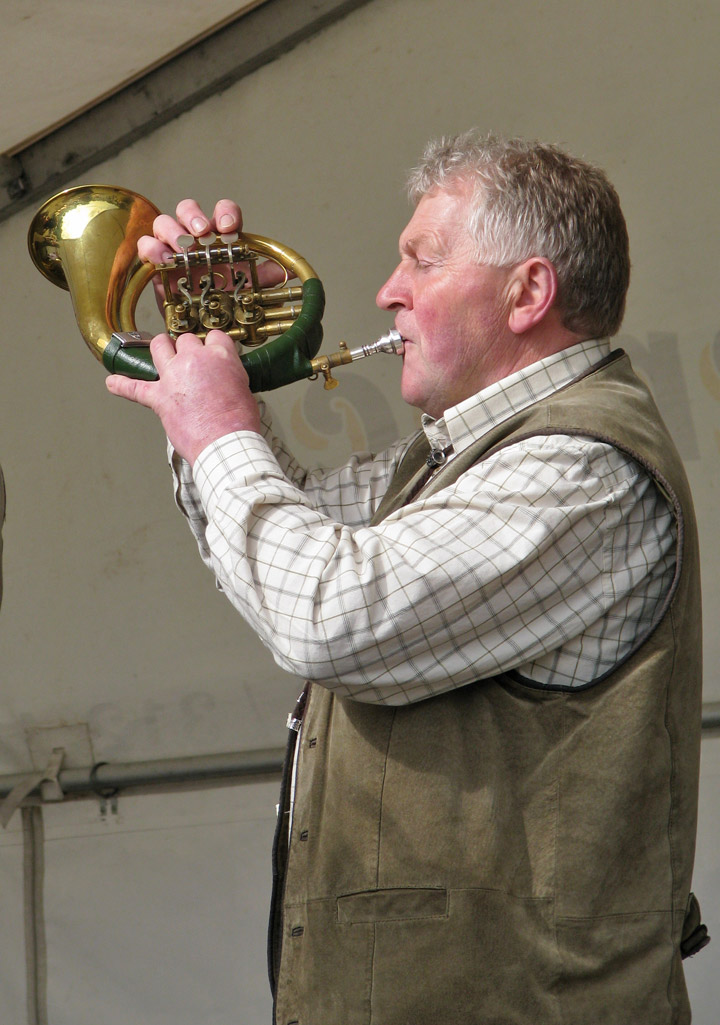
Like many German territories, Mecklenburg was sometimes partitioned and
re-partitioned among different members of the ruling dynasty. In 1621 it was
divided into the two duchies of Mecklenburg-Schwerin and Mecklenburg-Güstrow.
With the extinction of the Güstrow line in 1701, the Güstrow lands were
redivided, part going to the Duke of Mecklenburg-Schwerin, and part going to the
new line of Mecklenburg-Strelitz.
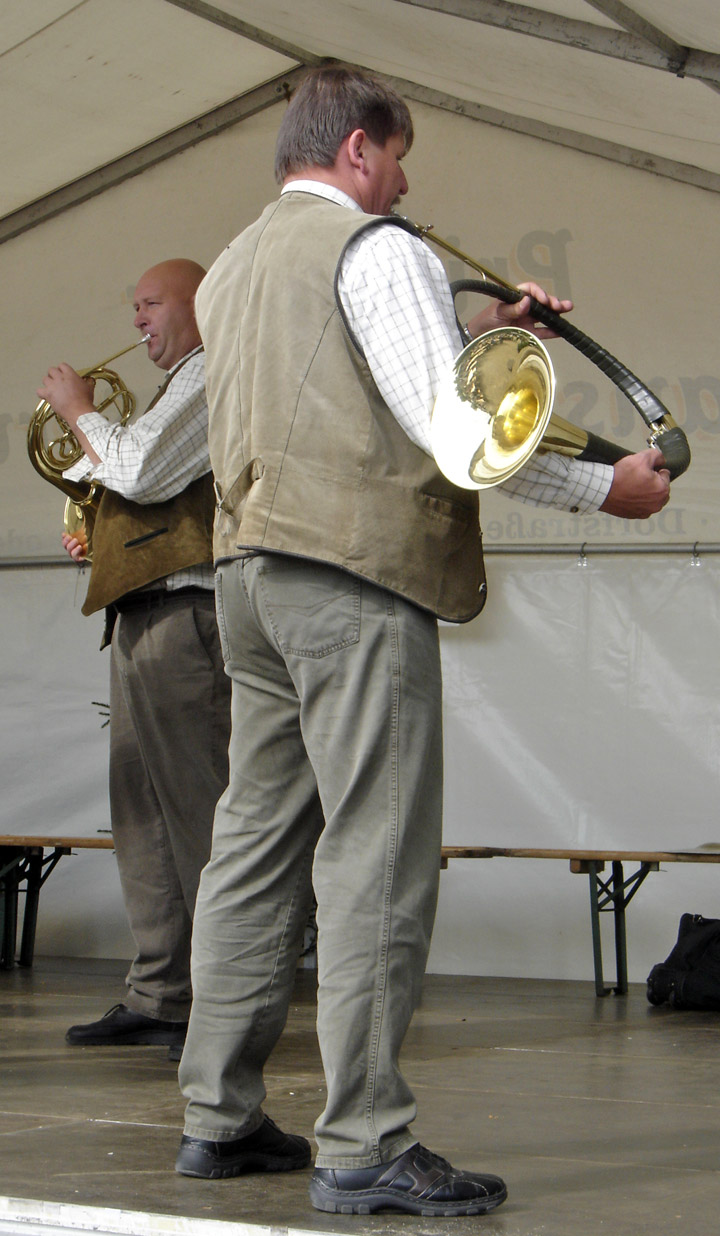
In 1815, the two Mecklenburgian duchies were raised to Grand Duchies, and
subsequently existed separately as such in Germany under enlightened but
absolute rule (constitutions being granted on the eve of World War I) until the
revolution of 1918. Life in Mecklenburg could be quite harsh. Practices such as
having to ask for permission from the Grand Duke to get married, or having to
apply for permission to emigrate, would linger late into the history of
Mecklenburg (i.e. 1918), long after such practices had been abandoned in other
German areas. Even as late as the later half of the nineteenth century the Grand
Duke personally owned half of the countryside. The last Duke abdicated in 1918,
as monarchies fell throughout Europe. The Duke's ruling house reigned in
Mecklenburg uninterrupted (except for two years) from its incorporation into the
Holy Roman Empire until 1918. From 1918 to 1933, the duchies were free states in
the Weimar Republic.
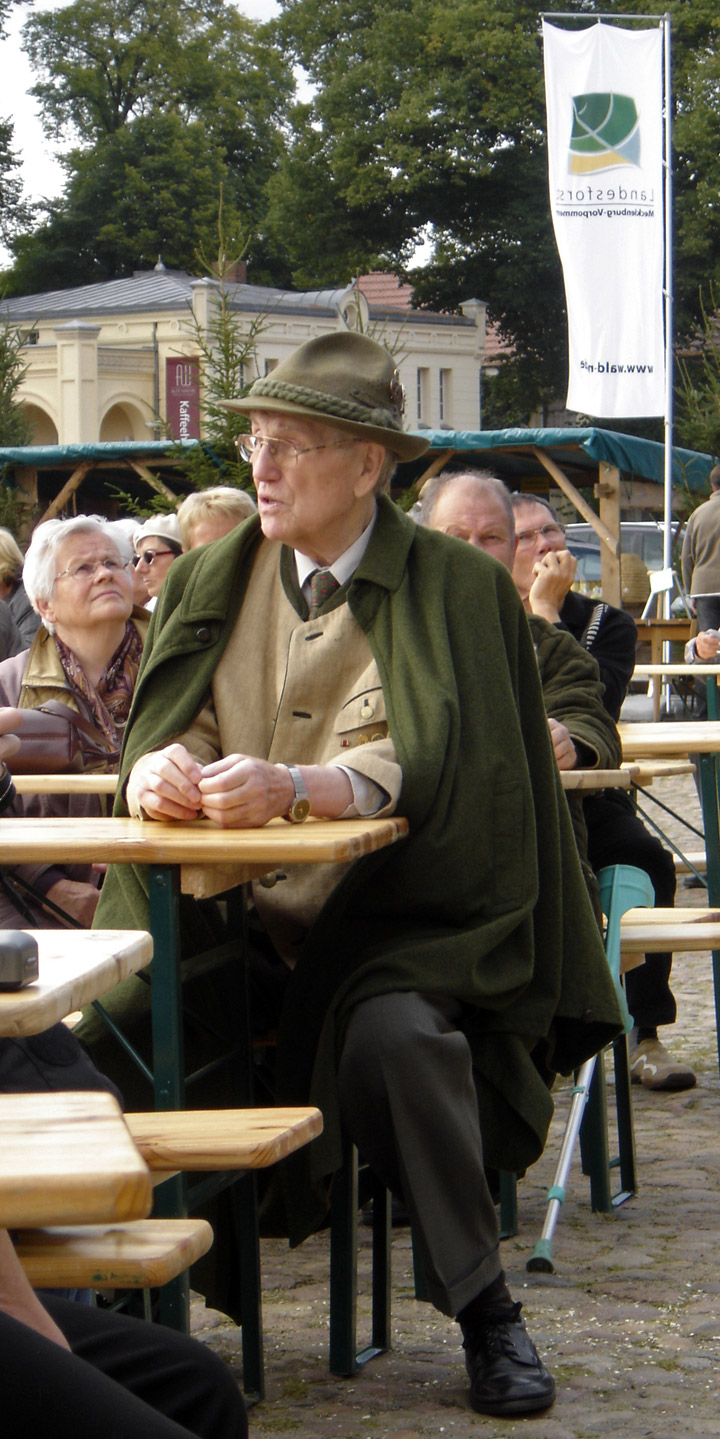
Traditionally Mecklenburg has always been one of the poorer German areas, and
later the poorer of the provinces, or Länder, within a unified Germany. The
reasons for this may be varied, but one factor stands out: agriculturally the
land is poor and can not produce at the same level as other parts of Germany.
The two Mecklenburgs made attempts at being independent states after 1918, but
eventually this failed as their dependence on the rest of the German lands
became apparent.
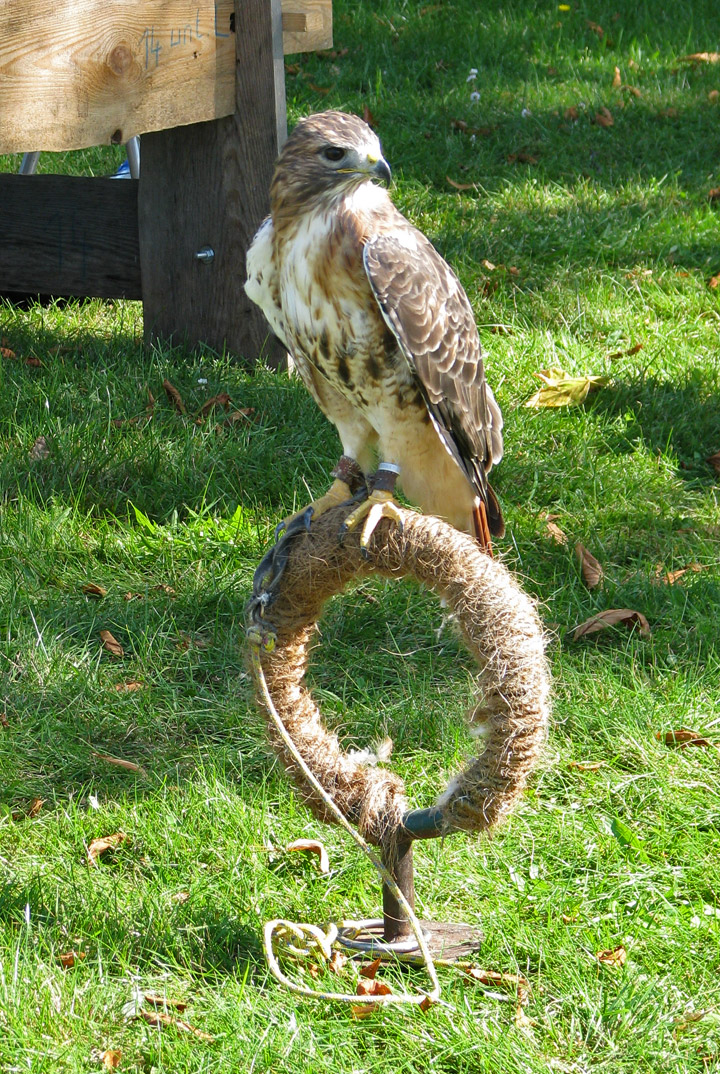
red tailed hawk
After three centuries of partition, Mecklenburg was united in 1934 by the Nazi government. The Wehrmacht assigned Mecklenburg and Pomerania to Wehrkreis II under the command of General der Infanterie Werner Kienitz, with the headquarters at Stettin. Mecklenburg was assigned to an Area headquartered at Schwerin, which was responsible for military units in Schwerin; Rostock; Parchim; and Neustrelitz.
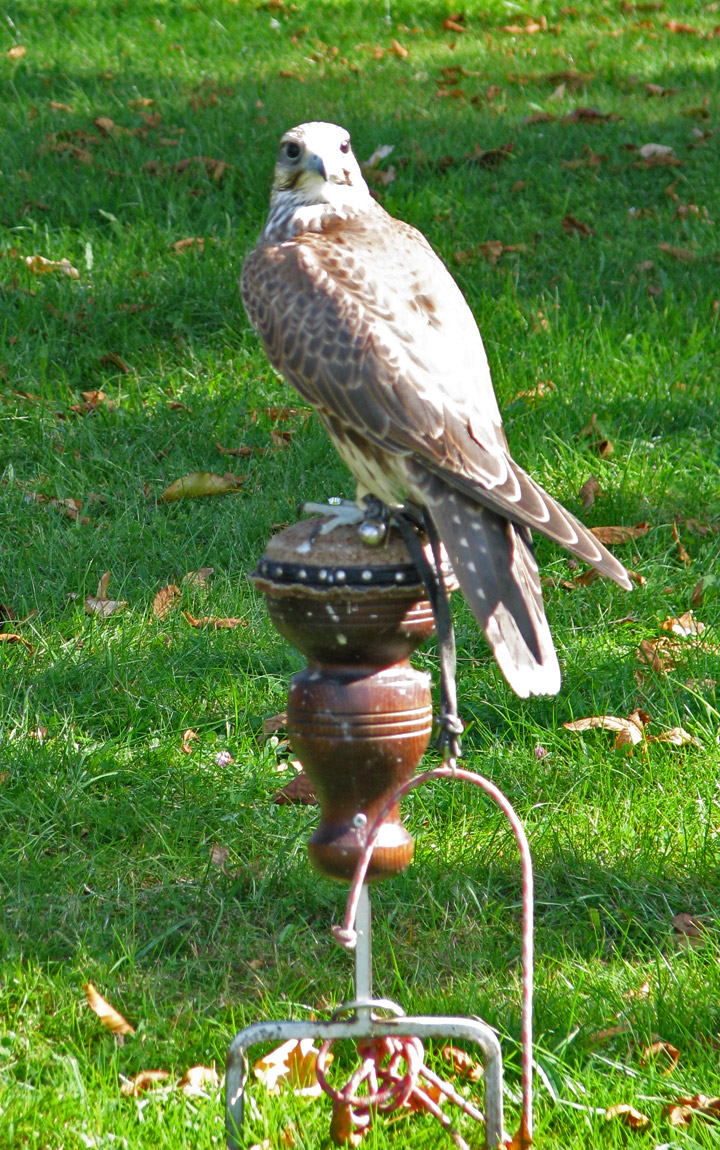
After World War II, the Soviet government occupying eastern Germany merged
Mecklenburg with the smaller neighboring region of Western Pomerania (German
Vorpommern) to form the state of Mecklenburg-Vorpommern. Mecklenburg contributed
about two-thirds of the geographical size of the new state and the majority of
its population. Also, the new state became temporary or permanent home for lots
of refugees expelled from former German territories seized by the Soviet Union
and Poland after the war. The Soviets changed the name from "Mecklenburg-Western
Pomerania" to "Mecklenburg" in 1947.
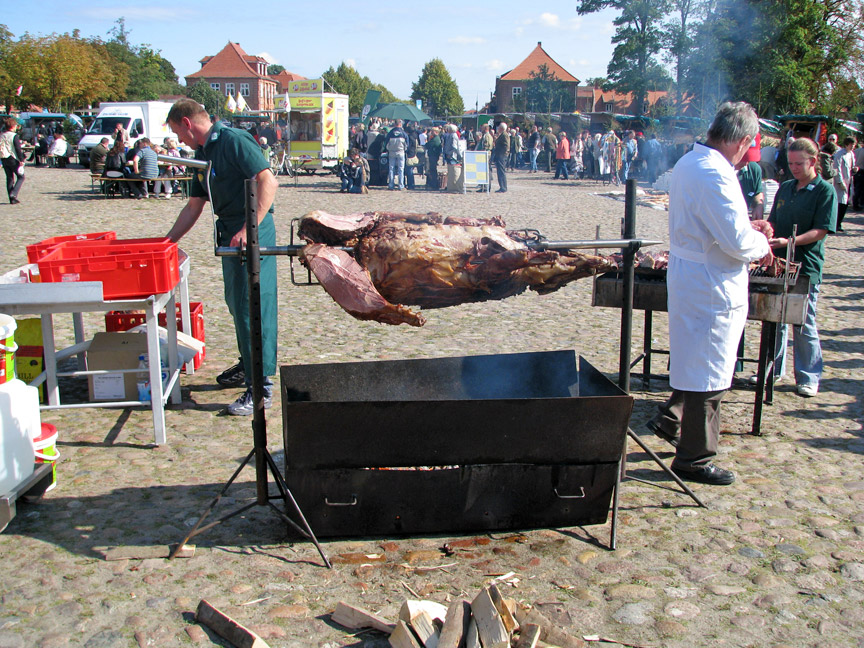
In 1952, the East German government ended the independent existence of
Mecklenburg, creating 3 districts ("Bezirke") out of its territory: Rostock,
Schwerin and Neubrandenburg.
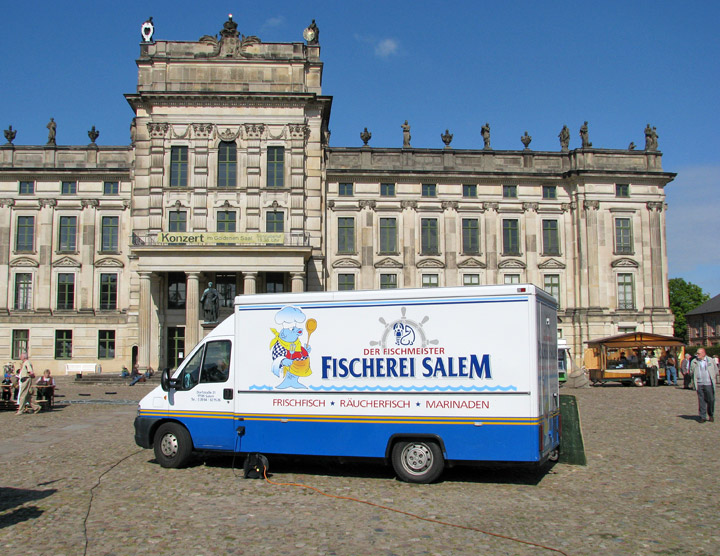
fresh fish or smoked fish
During German reunification in 1990, the state of Mecklenburg-Vorpommern was revived, and is now one of the 16 states of the Federal Republic of Germany.
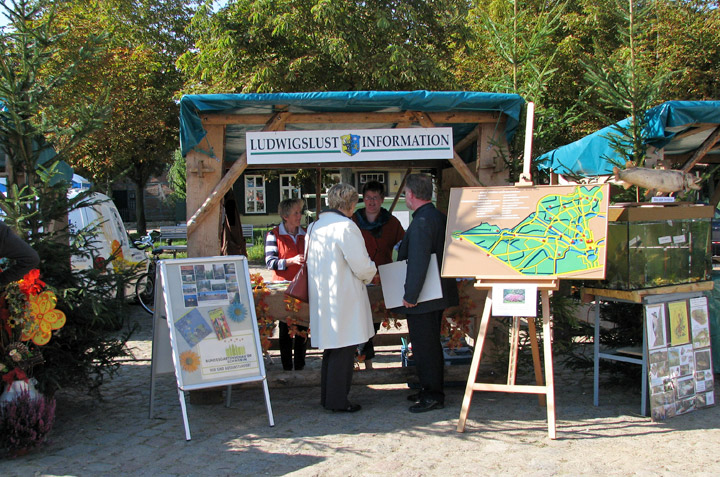
information about Ludwigslust and the Schloss Park
The House of Mecklenburg was founded by Niklot, prince of the Obotrites, Chizzini and Circipani on the Baltic See, who died in 1160. His Christian progeny was recognized as prince of the Holy Roman Empire 1170 and Duke of Mecklenburg 8 July 1348. On 27 February 1658 the ducal house divided in two branches: Mecklenburg-Schwerin and Mecklenburg-Strelitz.

pork for the festival
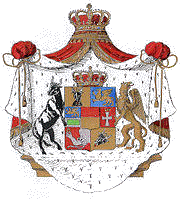
The arms used by both duchies in the nineteenth century
The flag of both Mecklenburg duchies is traditionally made of the colors blue, yellow and red. The sequence however changed more than once in the past 300 years. In 1813 the duchies used yellow-red-blue. 23 December 1863 for Schwerin and 4 January 1864 for Strelitz blue-yellow-red was ordered. Mecklenburg-Schwerin however used white instead of yellow for flags on sea by law of 24 March 1855.
Text from Wikipedia
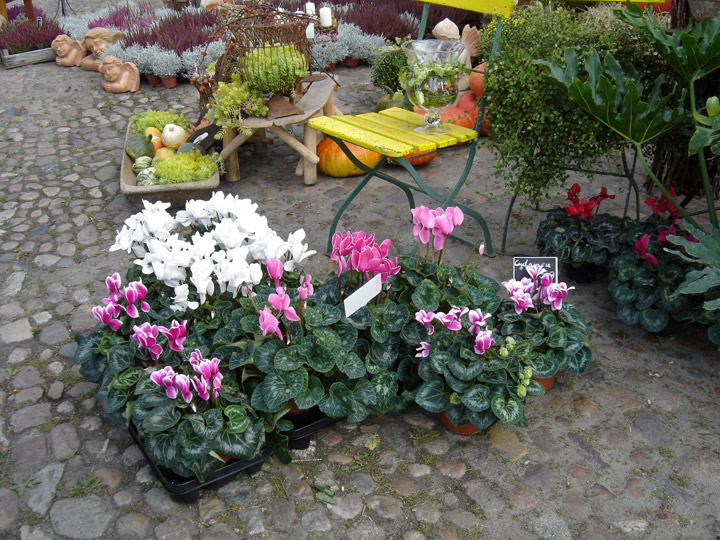
fall flowers
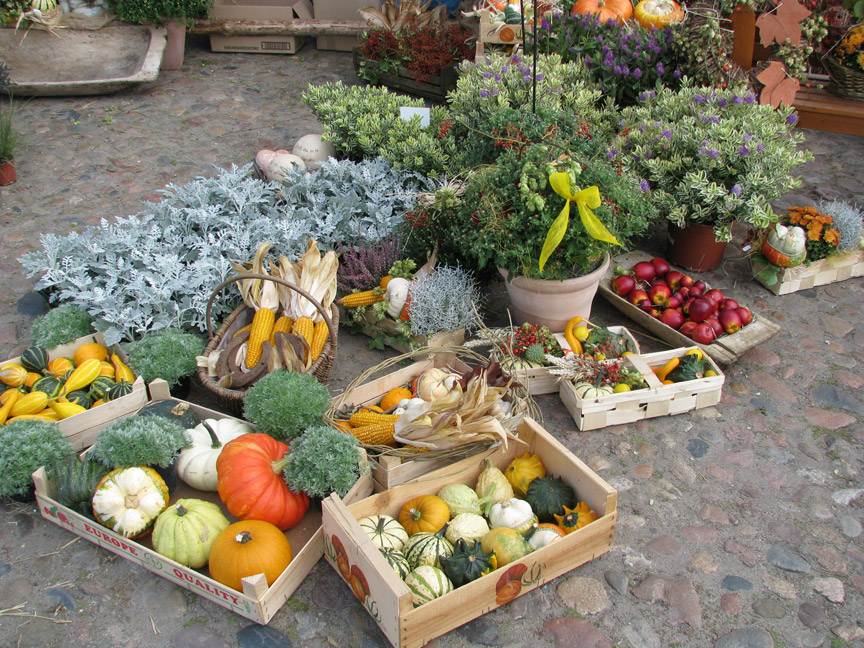
and vegetables
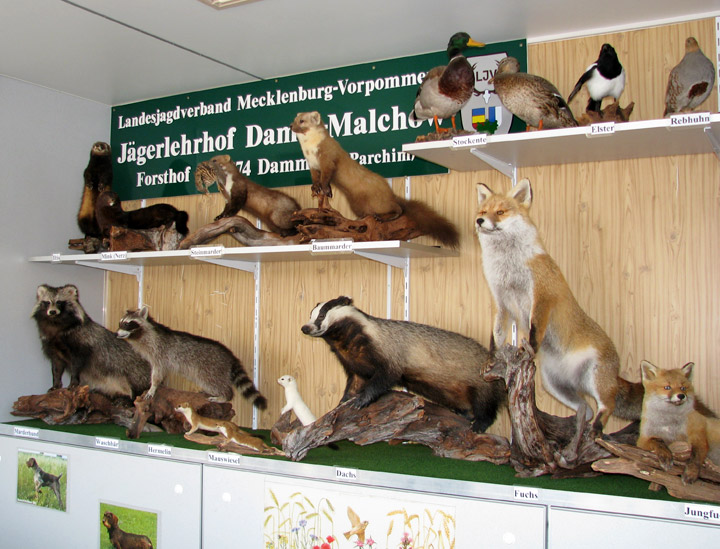
local game animals
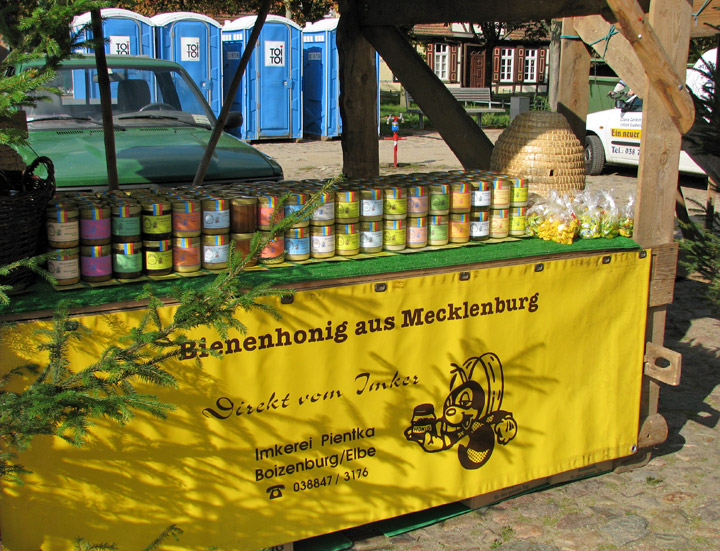
honey

game sausages

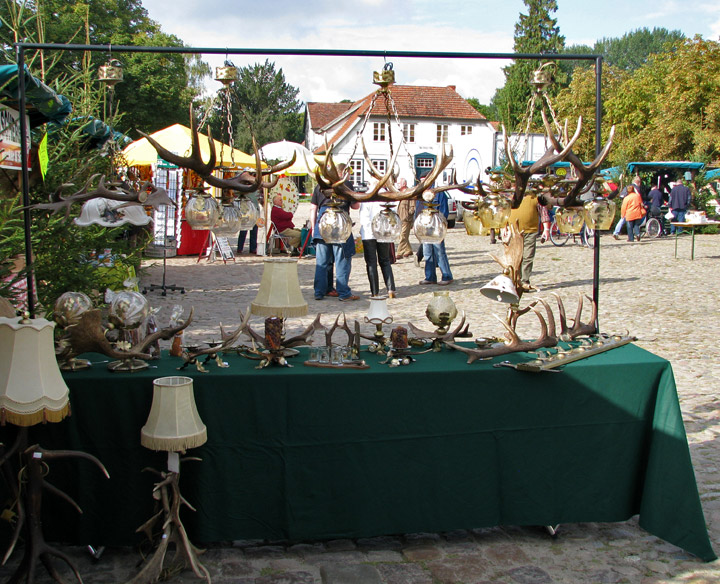
horn lamps
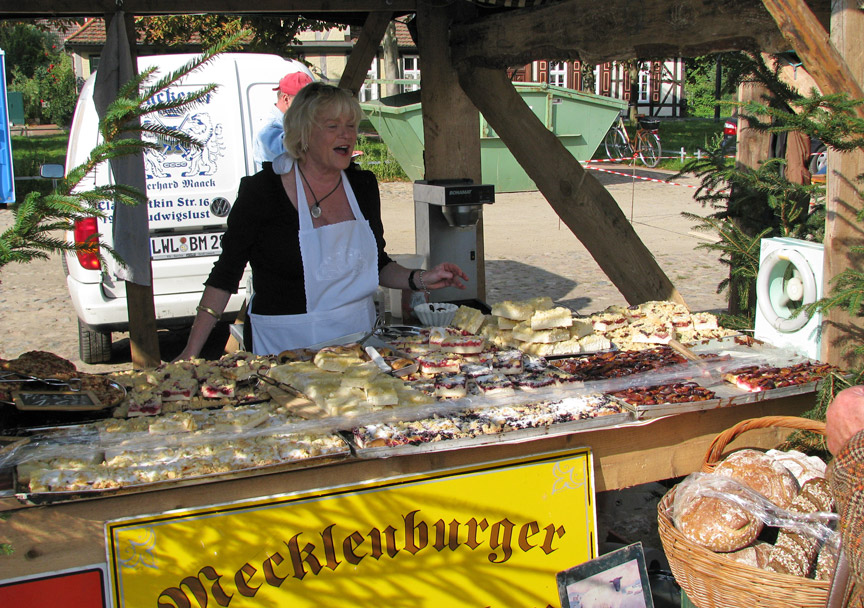
pastry for sale
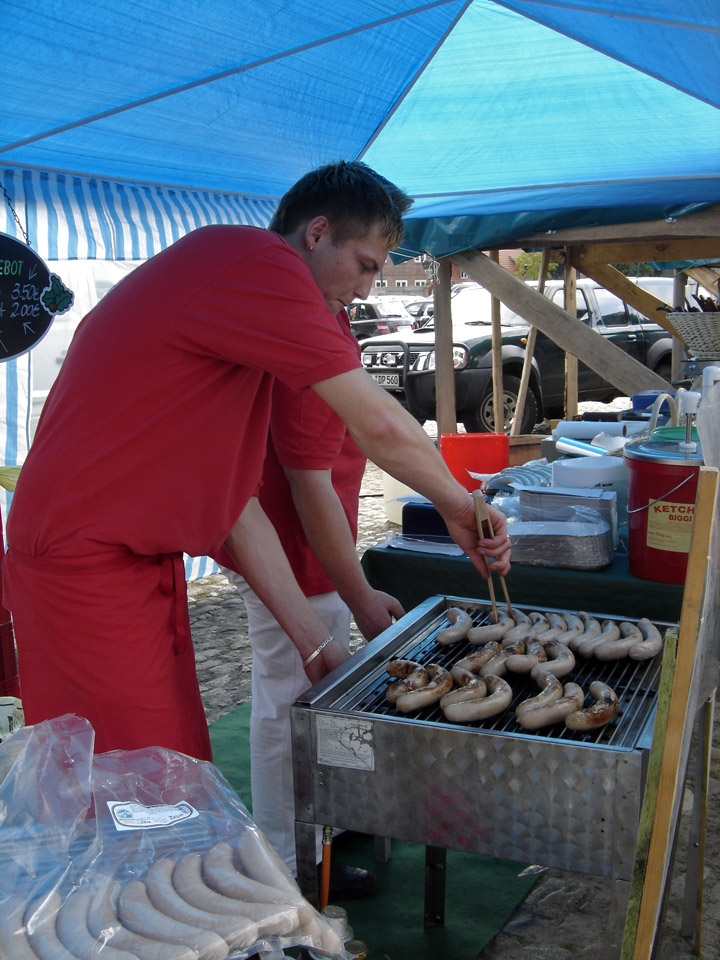
sausages being grilled
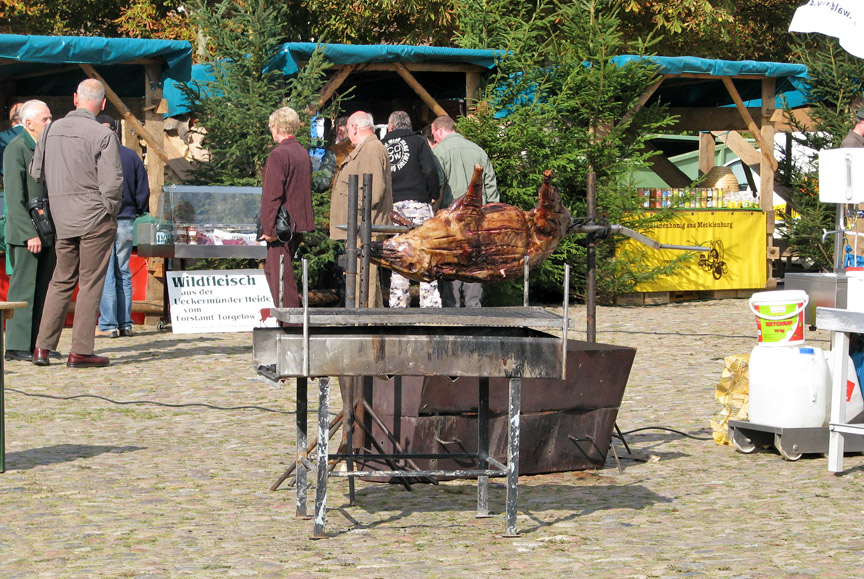
more roasted pig
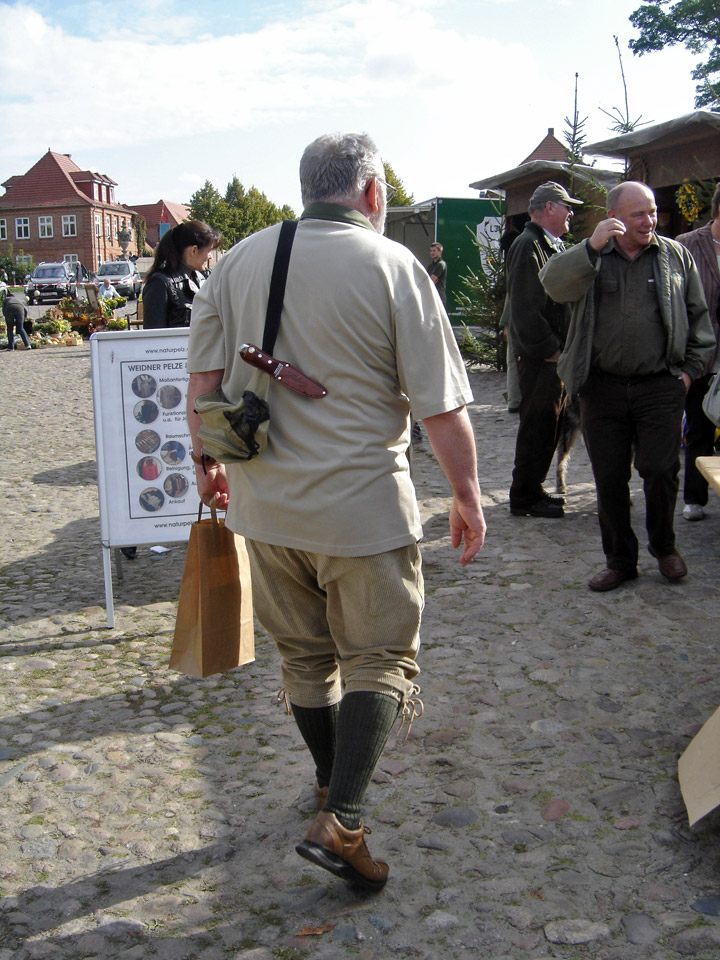
all for the huntsmen
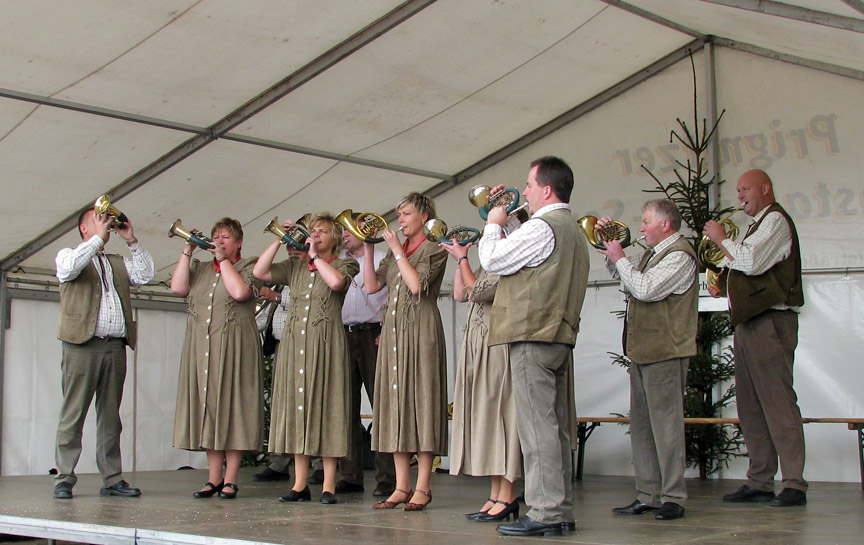
more hunting horn music

the band played on
